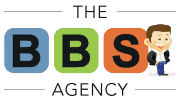In today’s digital age, where visuals dominate the online landscape, it’s easy to overlook the significance of properly naming images and providing alt text. However, neglecting these crucial aspects can hamper both the accessibility of your website and its search engine optimization (SEO) potential. In this blog post, we’ll delve into the importance of naming images and leveraging alt text, highlighting the benefits they bring to your website’s user experience and visibility.
Accessibility for All
Accessibility lies at the heart of a user-centric website. People with visual impairments rely on screen readers to interpret web content. When an image lacks an appropriate description, screen readers struggle to provide meaningful information, leaving visually impaired individuals at a disadvantage. By naming your images and adding alt text, you create a more inclusive digital environment, enabling everyone to perceive and understand the visual elements of your website.
Improved User Experience
A well-optimized website takes into account the diverse needs of its users. Even for visitors without visual impairments, descriptive image names and alt text enhance their overall browsing experience. When an image fails to load due to a slow internet connection or technical issues, the alt text acts as a placeholder, conveying the intended message or context. This ensures that users can still grasp the content and navigate through your site seamlessly.
SEO Benefits
Naming images and utilizing alt text isn’t just about accessibility; it also plays a crucial role in boosting your website’s visibility on search engines. Search engine crawlers rely heavily on text-based information to understand the content of your website. By incorporating relevant keywords into your image file names and alt text, you provide search engines with valuable context, enabling them to index your images accurately. This, in turn, enhances your website’s chances of appearing in relevant image search results, driving targeted traffic to your site.
Increased Organic Traffic
Well-optimized images can also generate organic traffic through image search results. When users search for specific images on platforms like Google Images, search engines display relevant results based on the image file names, alt text, and surrounding content. By effectively naming your images and providing detailed alt text, you increase the likelihood of your images appearing in these search results, attracting potential visitors who may then explore the rest of your website.
Branding and Consistency
Naming images and providing alt text offer additional opportunities for branding and consistency within your website. Consistent naming conventions make it easier to manage your image files, ensuring better organization and maintenance. Furthermore, descriptive alt text allows you to reinforce your brand’s voice and message. By crafting alt text that aligns with your website’s tone and style, you maintain a cohesive and engaging user experience.
Properly naming images and utilizing alt text are essential elements in creating an accessible, user-friendly, and SEO-optimized website. By considering the needs of diverse users and search engines alike, you improve the overall experience for your audience and enhance your website’s visibility online. So, let’s embrace the power of descriptive image names and alt text to create an inclusive and discoverable digital presence that leaves a lasting impression on visitors.



